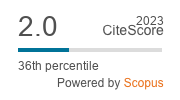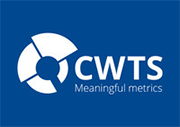First Approach to Unveiling the Antidiabetic Potential of Agave potatorum: α-Glucosidase Inhibition and Phytochemistry
DOI:
https://doi.org/10.29356/jmcs.v69i2.2258Keywords:
TLC-bioautography, ethnomedicine, phytochemical analysis, type 2 diabetes mellitusAbstract
Abstract. Agave potatorum Zucc. leaves infusion is used in traditional medicine to treat type II diabetes mellitus, however, there are no studies that validate this use. Therefore, this work aims to evaluate the potential antidiabetic activity of A. potatorum leaves infusion from one to eight years old by assessing the α-glucosidase inhibitory activity. Thin-layer chromatography (TLC)‒bioautography and spectrophotometry using acarbose as a positive control were used to assay the α-glucosidase inhibitory activity. The phytochemical constituents responsible for the inhibition detected by bioautography were assayed with qualitative phytochemical screening methods. Regardless of the age of the agave, all leaves possess secondary metabolites (SM) capable of inhibiting α-glucosidase, according to the bioautography assay and the inhibition determined by UV-vis. The inhibition values of infusions at 2 mg/mL showed that for agave aged 2, 4, 5, 7, and 8 years old the inhibition was higher than 50 %, in the same range as acarbose at the same concentration. Phytochemical analysis revealed the presence of terpenes and phenolic compounds like tannins, flavonoids, anthraquinones, phenol carboxylic acids, and coumarins in the inhibition zones of the bioautography assay. Therefore, the antidiabetic activity of A. potatorum reported in traditional medicine is achieved through the inhibition of the enzyme α-glucosidase by the diverse secondary metabolites in leaves.
Resumen. La infusión de hojas de Agave potatorum Zucc. se utiliza en la medicina tradicional para tratar la diabetes mellitus de tipo II, sin embargo, no existen trabajos que validen dicho uso. El objetivo de este trabajo fue evaluar la potencial actividad antidiabética de las infusiones de hojas de A. potatorum de uno a ocho años de edad mediante la evaluación de la actividad inhibitoria de la α-glucosidasa. Para ensayar la actividad inhibitoria de la α-glucosidasa se utilizó cromatografía en capa fina (TLC)-bioautografía y espectrofotometría utilizando acarbosa como control positivo. Los constituyentes fitoquímicos responsables de la inhibición detectada por bioautografía se analizaron con métodos cualitativos de cribado fitoquímico. Independientemente de la edad del agave, todas las hojas poseen metabolitos secundarios capaces de inhibir la α-glucosidasa, según el ensayo de bioautografía y la inhibición determinada por UV-vis. Los valores de inhibición de las infusiones a 2 mg/mL mostraron que, para las infusiones de hojas de agave de 2, 4, 5, 7 y 8 años la inhibición fue superior al 50 %, en el mismo rango que la acarbosa a la misma concentración. El análisis fitoquímico reveló la presencia de terpenos y compuestos fenólicos como taninos, flavonoides, antraquinonas, ácidos carboxílicos fenólicos y cumarinas en las zonas de inhibición del ensayo de bioautografía. Por lo tanto, la actividad antidiabética de A. potatorum descrita en la medicina tradicional se lleva a cabo a través de la inhibición de la enzima α-glucosidasa por los diversos metabolitos secundarios presentes en las hojas y casi de manera independiente de la edad de la planta.
Downloads
References
Magliano, D. J.; Boyko, E. J., in: IDF Diabetes Atlas, 10th ed. International Diabetes Federation Ed., Brussels, 2021, 35914061.
Clapham, J., in: Methods in Molecular Biology, Vol. 2076, Stocker CJ, Ed., Humana Press, New York, 2020, 1-30.
Blahova, J., Martiniakova, M., Babikova, M., Kovacova, V., Mondockova, V., Omelka, R. Pharmaceuticals. 2021, 14, 1-32. DOI: 10.3390/ph14080806.
Kumar, S., Narwal, S., Kumar, V., Prakash, O. Pharmacogn. Rev. 2011, 5, 19-29. DOI: 10.4103/0973-7847.79096.
T Bottorff, M. B.; Evans, W. E.; Hillebrand, I.; Junge, B.; Müller, L.; Puls, W.; Schmidt, D. D.; Truscheit, E.; Will, H., in: Progress in Clinical Biochemistry and Medicine, Vol. 7, Ed., Springer Science & Business Media, Berlin, 1988, 17-99. DOI: 10.1007/978-3-642-73461- 8.
Li, G.Q.; Kam, A.; Wong, K.H.; Zhou, X.; Omar, E.A.; Alqahtani, A.; Li, K.M.; Razmovski-Nauovski, V.; Chan, K., in: Diabetes. An Old Disease, a New Insight, Ahmad, S. T., Ed., Landes Bioscience and Springer, New York, 2013, 396-413. DOI: 10.2174/1573399816666201103143225.
Assefa, S.; Yang, E.; Chae, S.; Song, M.; Lee, J.; Cho, M.; Jang, S. Plants. 2020, 9, 1-17. DOI: 10.3390/plants9010002.
Dirir, A.M.; Daou, M.; Yousef, A.F.; Yousef, L.F. Phytochem. Rev. 2022, 21, 1049–1079. DOI: 10.1007/s11101-021-09773-1.
Deng, C.; Zhang, N.; Lin, H.; Lu, W.; Ding, F.; Gao, Y.; Zhang, Y. Curr. Med. Chem. 2024. DOI: 10.2174/0109298673272908231115101520.
García-Mendoza, A. Acta Bótanica Mexicana. 2010, 91, 71-93.
Padilla-Gómez, E., in: Ecological and ethnobotanical study of the vegetation of the municipality of San Pablo Etla, Oaxaca, CIIDIR-IPN, México, 2007.
Servicio Nacional de Inspección y Certificación de Semillas (SNICS). Guía técnica para la descripción varietal. Agave Spp.., Mexico, 2014.
Chemists, A. Association of Official Analytical Chemists (AOAC) Official Methods of Analysis. AOAC Washington, DC, USA, 2004.
Simões-Pires, C.; Hmicha, B.; Marston, A.; Hostettmann, K. Phytochem. Anal. 2009, 20, 511-515. DOI: 10.1002/pca.1154.
Yang, Y.; Gu, L.; Xiao, Y.; Liu, Q.; Hu, H.; Wang, Z.; Chen, K. PLoS One. 2015, 10, 1-13. DOI: 10.1371/journal.pone.0116922.
Wagner, H.; Bladt, S., in: Plant Drug Analysis: a Thin Layer Chromatography Atlas. Springer-Verlag, Germany, 2001.
Bailey, R.M.; Bourne, E.J. J. Chromatrogr. 1960, 4, 206-213. DOI: 10.1016/S0021-9673(01)98394-3.
Soto-Castro, D., Pérez-Herrera, A., García-Sánchez, E., Santiago-García, P. Waste Biomass Valorization. 2021, 12, 4537-4547. DOI: 10.1007/s12649-020-01329-2.
Sahnoun, M.; Saibi, W.; Brini, F.; Bejar, S. J. Food Sci. Technol. 2018, 55, 1489-1498. DOI: 10.1007/s13197-018-3065-6.
Sahnoun, M.; Bejar, S.; Daoud, L.; Ayadi, L.; Brini, F.; Saibi, W. Nat. Prod. Res. 2019, 33, 755-758. DOI: 10.1080/14786419.2017.1408094.
Salazar-Pineda, D.; Castro-Alarcón, N.; Moreno-Godínez, M.; Nicasio-Torres, M.; Pérez-Hernández, J.; Alvarez-Fitz, P. Int. J. Pharmacol. 2017, 1, 1063-1070. DOI: 10.3923/ijp.2017.1063.1070.
Proença, C.; Freitas M.; Ribeiro, D.; Oliveira, E.F.T.; Sousa, J.L.C.; Tomé, S.M.; Ramos, M.J.; Silva, A.M.S.; Fernandes, P.A.; Fernandes, E. J. Enzyme Inhib. Med. Chem. 2017, 32, 1216-1228. DOI: 10.1080/14756366.2017.1368503.

Downloads
Additional Files
Published
Issue
Section
License
Copyright (c) 2025 Nahum Galindo-Vargas, Edgar García-Sánchez, Elia Donají Juárez-Niño, Patricia A. Santiago-García, Delia Soto-Castro

This work is licensed under a Creative Commons Attribution-NonCommercial 4.0 International License.
Authors who publish with this journal agree to the following terms:
- Authors retain copyright and grant the journal right of first publication with the work simultaneously licensed under a Creative Commons Attribution License that allows others to share the work with an acknowledgement of the work's authorship and initial publication in this journal.
- Authors are able to enter into separate, additional contractual arrangements for the non-exclusive distribution of the journal's published version of the work (e.g., post it to an institutional repository or publish it in a book), with an acknowledgement of its initial publication in this journal.









